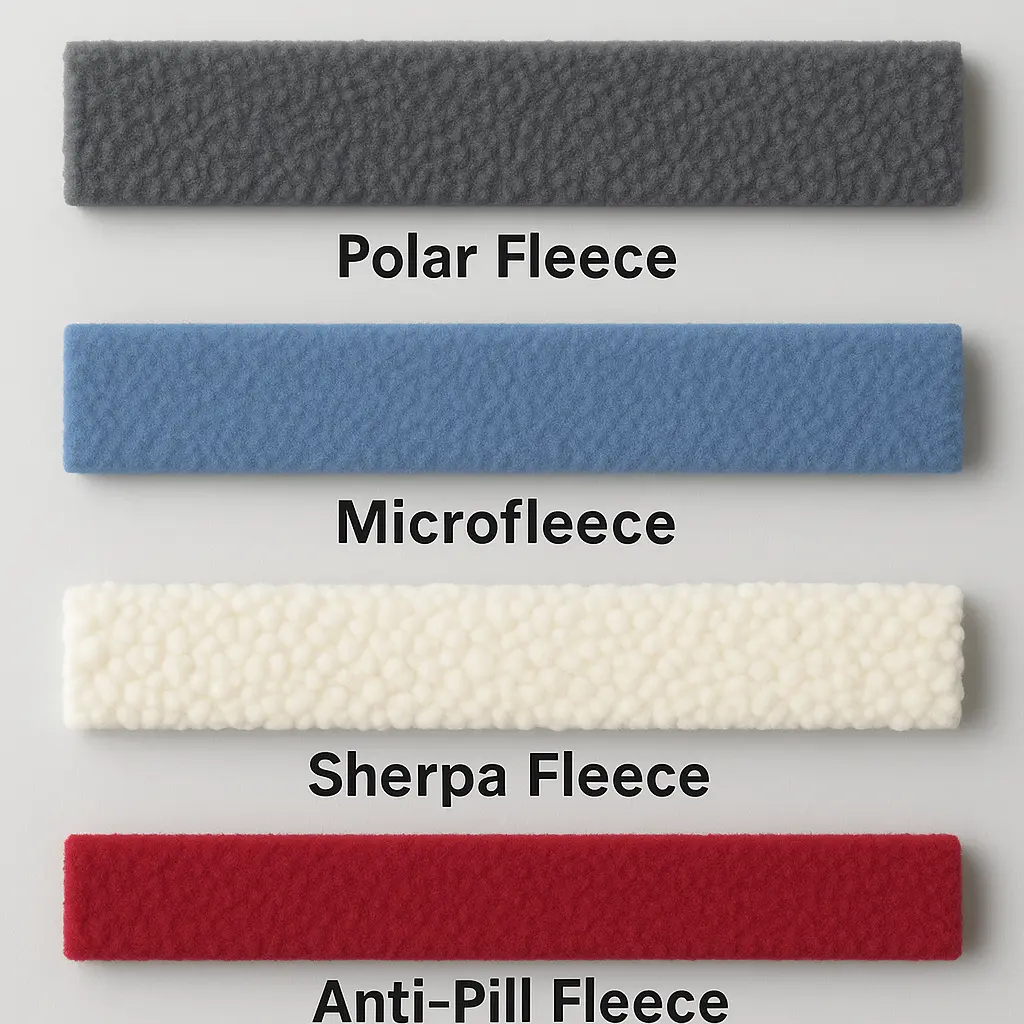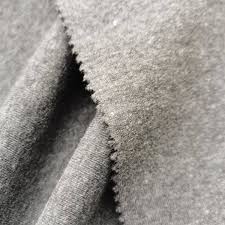Polyester fleece has become a staple fabric in the global textile market, particularly for cold-weather apparel, home textiles, and outdoor gear. Known for its warmth, softness, and affordability, polyester fleece is a high-performance synthetic material widely used in both mass-market and specialty products.
In this guide, we explore what polyester fleece is, how it’s made, and why it’s a valuable material for B2B textile sourcing and product development.
1. What Is Polyester Fleece?
Polyester fleece is a soft, insulating fabric made from 100% polyester fibers, typically brushed on one or both sides to create a plush, fuzzy surface that traps warmth. Originally developed in the 1970s as a lightweight alternative to wool, fleece has become a go-to material for cold-weather products.
Key characteristics:
- 100% synthetic (polyethylene terephthalate)
- Brushed surface (usually double-sided)
- Lightweight but highly insulating
- Moisture-wicking and breathable
- Non-fraying and anti-wrinkle
2. How Is It Made?
The manufacturing process of polyester fleece typically includes:
- Knitting polyester yarn into a lightweight fabric (usually circular knit)
- Brushing one or both sides to raise fibers and create a fuzzy nap
- Shearing to even out the texture
- Optional treatments like anti-pill coating or flame retardancy
Modern fleece can also be made from recycled PET bottles, adding eco-friendly value for sustainability-focused brands.
3. Types of Polyester Fleece
Polyester fleece comes in several variations, depending on finish, weight, and use:
| Type | Features | Applications |
|---|---|---|
| Polar Fleece | Thick, soft, double-sided brushed | Jackets, blankets, pet wear |
| Microfleece | Ultra-light, single-layer, fine nap | Linings, baby clothing, lightweight throws |
| Anti-pill Fleece | Treated to reduce pilling after washing | Garments, home textiles |
| Sherpa Fleece | Textured, wool-like surface | Lining for coats, blankets |
| Bonded Fleece | Two layers fused for structure & warmth | Outdoor gear, hoodies |

4. Advantages of Polyester Fleece
For both manufacturers and consumers, polyester fleece offers a balance of performance and cost-efficiency:
- ✅ Excellent warmth-to-weight ratio
- ✅ Quick-drying and moisture-wicking
- ✅ Hypoallergenic and easy to wash
- ✅ Durable and wrinkle-resistant
- ✅ Versatile across apparel and home markets
From a sourcing standpoint, fleece allows for bulk dyeing, sublimation printing, and custom surface treatments, making it highly adaptable.
5. Common Applications by Industry
Apparel
- Jackets, sweatshirts, lounge sets, thermal base layers
- Pet apparel, gloves, scarves, hats
Home Textiles
- Fleece blankets, throws, baby swaddles
- Mattress pads, heated blanket covers
Outdoor & Sports
- Hiking and camping gear
- Equestrian blankets
- Sleeping bag linings
Promotional & Retail
- Custom logo throws
- Branded leisurewear
Fleece products are particularly popular in fall/winter seasonal campaigns, and are ideal for high-margin, soft goods in e-commerce.
6. B2B Considerations for Polyester Fleece
When sourcing or developing fleece-based products, consider the following:
- Weight (GSM): Ranges from 150 GSM (microfleece) to 350+ GSM (polar fleece)
- Anti-pilling treatment: Especially important for apparel and heavy-use items
- Fire-retardant options: Required for specific export markets
- Color customization: Pantone matching available for OEM production
- Certifications: OEKO-TEX®, GRS (if recycled), REACH-compliant for EU markets
Bulk production typically starts at 1,000 meters per color, with lead times of 15–30 days depending on finishing requirements.
Conclusion
Polyester fleece is one of the most versatile and scalable fabrics in the textile industry. Its lightweight warmth, easy care, and affordability make it ideal for a wide range of end products. For wholesalers, manufacturers, and private label brands, understanding the types and qualities of fleece opens up significant opportunities in seasonal and cold-weather product lines—particularly when paired with sustainability or anti-pilling features.


Leave a Reply